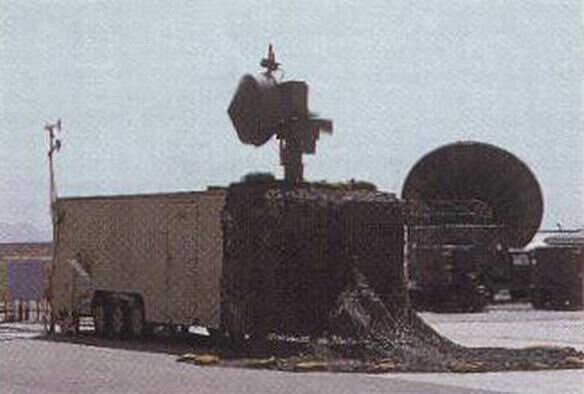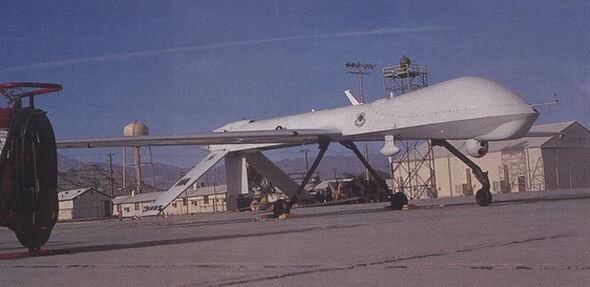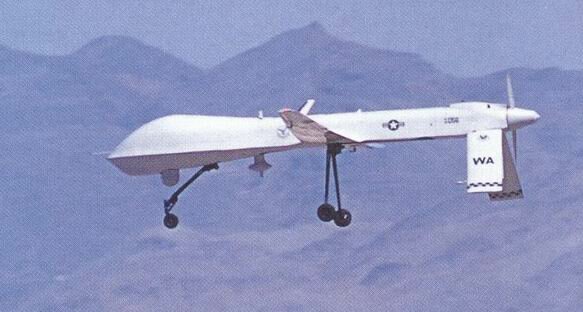|
From ACIG.org ACIG Database
Not much is known in the public about the Predatros in USAF service, except what usually comes to the light from occassional reports about some of these small - but immensely valuable - planes getting into problems over such places like Iraq. The June 2002 issue of the "Air Force Magazine", brought a highly intersting pictorial report about the training of USAF crews on RQ-1s, some details about the force structure, and new versions of this "UAV" introduced in service recently. Given the important role Predators play in combat operations over Afghanistan, and are likely to play over Iraq, here the most interesting details.
While the RQ-1 Predator is not yet officially declared operational, it is meanwhile more than battle tested, due to intensive use during reconnaissance missions over Kosovo, in 1999, Afghanistan, and Iraq ever since. The center of USAF Predator operations is Indian Springs Air Force Auxilliary Field, some 40nm NW of Las Vegas, where the 11th, 15th, and 17th RS are stationed. The 11th RS was activated at Nellis AFB, in 1995, the 15th RS followed in 1997, while the 17th RS began operating only in March 2002, and was organized as the mission requirements have greatly increased due to simultaneous operations in Afghanistan and Iraq: the unit is likely to become fully operational in 2005. A single Predator system, designated RQ-1, typically comprises four UAVs, a ground control station (GCS), and a Trojan Spirit II satellite communication suite. Each system has a crew of around 55 controllers, maintainers, and intel personnel. Predator pilots usually come from manned aircraft systems, and fly their aircraft from the GCS, using a keyboard, throttle button, joystick, and breake pedals under the console, while monitoring a map and several screen displays, showing them where the aircraft is flying and what its cameras see. For most of the flight, however, the Predator flies along a pre-programmed flight path towards the assigned station, and then usually maintains orbit automatically. During the mission the pilots take over only if the plane is needed to change the station. On the picture bellow the training station is show, which is in essence very similar to the operational flying stations.
The GCS is similar to a standard shipping container, but has a 20ft diameter satellite dish, that connects it with the UAV. It is small enough so that it can be transported by C-130 Hercules transports. For transportation the Predators can be disassembled as well.
Each Predator UAV is equipped with nose-mounted color camera (also used by the pilot for flight control), a day variable aperture TV camera, and a variable aperture IR camera for low light and night. In addition, it has a synthetic aperture radar (enabling it to "see" through smoke, clouds, or haze, and produce radar images). The sensors cannot be operated simultaneously. Upgrades on the newer versions - such like RQ-1Bs - made the Predator meanwhile capable of communicating with other aircraft and ground stations. The RQ-1 was also armed and was used in combat in Afghanistan: currently only two Hellfire anti-tank missiles are usually carried, but in the future the number might increase to four or even six. Newer versions, which have an increased payload carrying capability and higher operational speed and ceilling, are also to get an integrated Multispectral Targeting System (including a laser designator) so to make them capable of target designation. Currently operational are the RQ-1A and the RQ-1B, the last of which can be recognized by an additional blade aerial on the top of the fuselage.
The tempo of operations of USAF units equipped with Predators is so high, that the usual 90-schedules cannot be kept, and most of the crews deployed more than once during the last year. For this year the USAF requested a budget of $154 million for a total of 22 new Predator systems (i.e. 88 drones).
© Copyright 2002-3 by ACIG.org |






